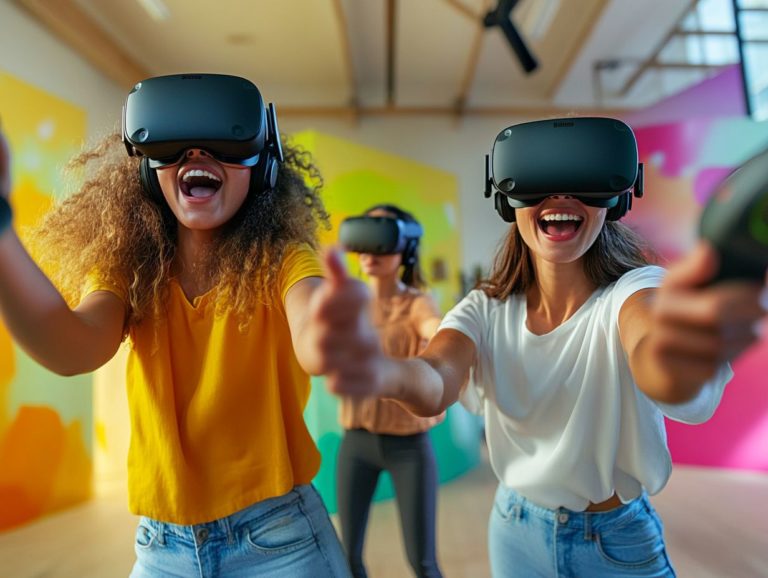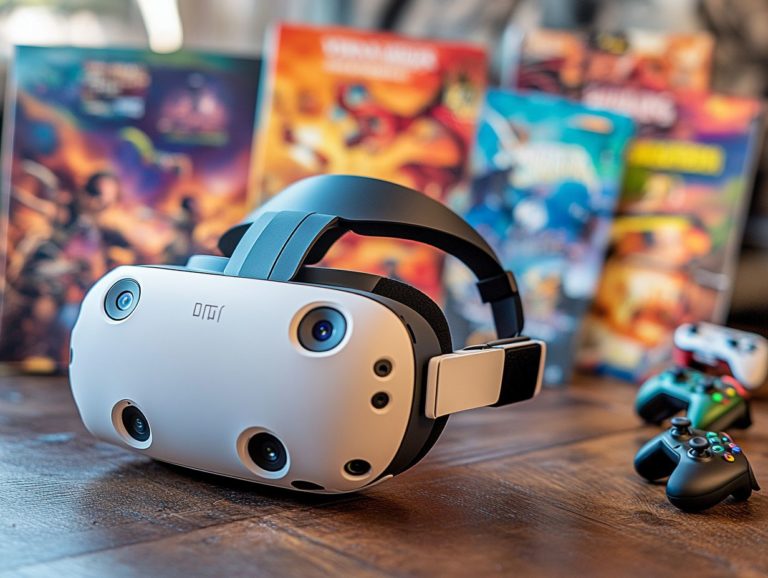how vr is used in marketing and advertising
Virtual reality (VR) is revolutionizing the marketing and advertising landscape, providing innovative avenues to connect with consumers like never before. This article delves into the many benefits of VR, highlighting how it can enhance customer engagement, boost brand awareness, and refine your data analytics.
You ll explore successful campaigns that illustrate VR’s immense potential and uncover practical tips for seamlessly integrating this technology into your marketing strategies. The article also discusses the future of VR in this space and its likely impact on consumer interactions. Don t miss out! Discover how VR can transform your marketing strategies into something exciting and new.
Contents
- Key Takeaways:
- Benefits of VR in Marketing and Advertising
- Examples of Successful VR Marketing and Advertising Campaigns
- How to Incorporate VR into Marketing and Advertising Strategies
- Future of VR in Marketing and Advertising
- Preguntas Frecuentes
- 1. C mo se utiliza la realidad virtual (RV) en marketing y publicidad?
- 2. Cu les son algunos ejemplos de RV utilizada en marketing y publicidad?
- 3. C mo beneficia a las marcas el uso de la RV en marketing y publicidad?
- 4. Qu tipos de negocios o industrias pueden beneficiarse del uso de la RV en marketing y publicidad?
- 5. C mo se puede integrar la realidad virtual en la estrategia general de marketing y publicidad de una marca?
- 6. Es la realidad virtual accesible para todos los consumidores y c mo pueden las marcas asegurar la inclusividad al utilizarla en marketing?
Key Takeaways:
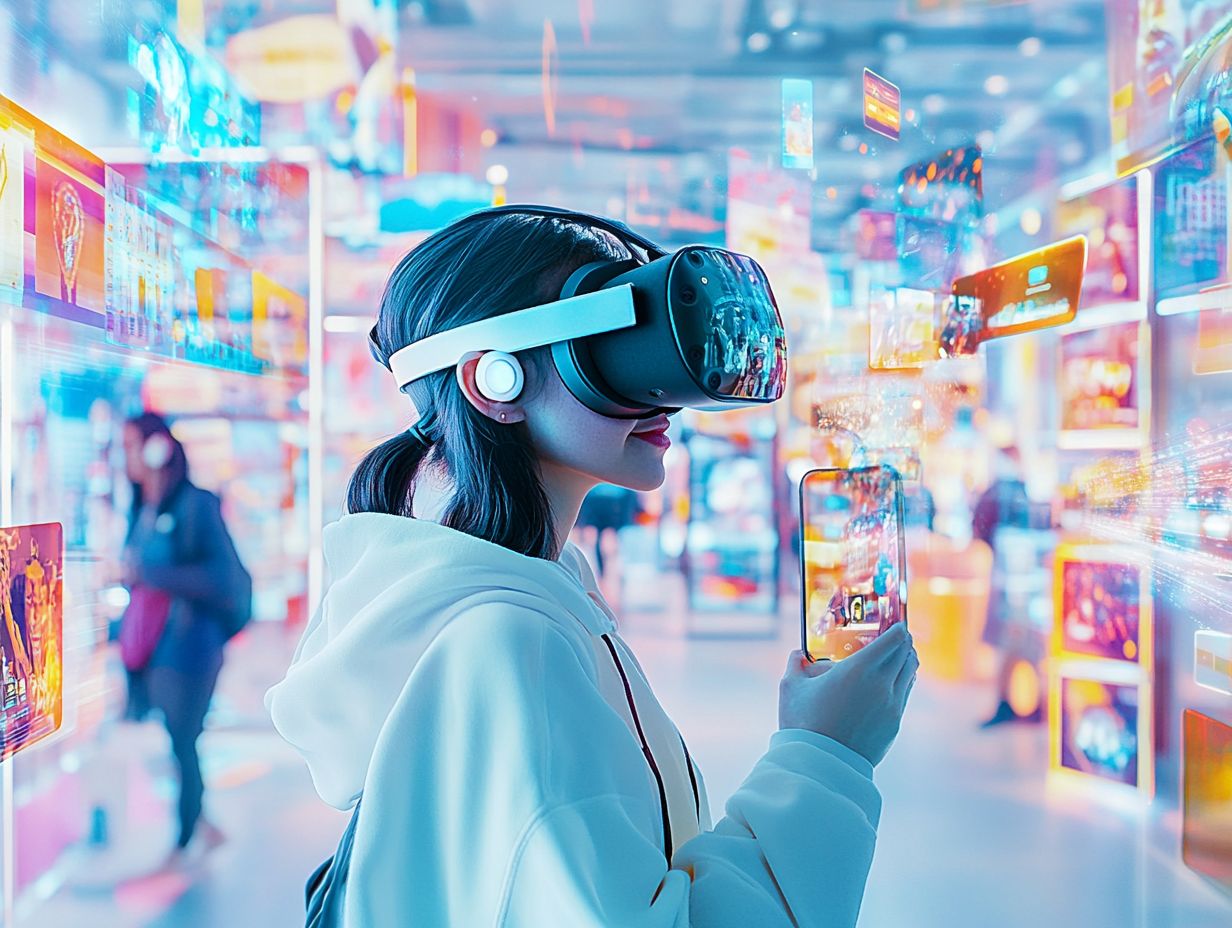
VR creates unforgettable experiences that make customers more likely to return.
Through VR, marketers can create brand awareness and leave a lasting impression on their target audience, ultimately leading to improved brand recognition and sales.
The use of VR in marketing and advertising allows for more accurate data collection and analytics, providing valuable insights into consumer behavior and preferences for more targeted campaigns.
Defining Virtual Reality
Virtual Reality (VR) is a technology that lets you experience a computer-generated world, crafting highly engaging and interactive experiences that simulate real-world scenarios. By harnessing advanced digital technologies, VR transforms the way you interact with brands, opening up avenues for telling stories in a way that feels real.
Unlike traditional media, VR has the power to evoke emotional intensity and foster brand loyalty through memorable experiences, establishing itself as an invaluable asset in the marketing landscape. Essential components include hardware such as headsets, sensors, and motion controllers that track your movements, ensuring a seamless experience. Good graphics and sound are essential for a realistic experience.
What sets VR apart is its distinction from augmented reality (AR). While AR overlays digital elements onto the real world, VR transports you entirely into a computer-generated universe. This technology finds applications across various sectors, including education, healthcare, and real estate, where it can simulate environments for training or walkthroughs.
In the realm of VR marketing, brands use this technology to craft unforgettable experiences that resonate with customers on a deeper emotional level, showcasing products in innovative ways that traditional advertising simply cannot match.
Benefits of VR in Marketing and Advertising
Incorporating Virtual Reality (VR) into your marketing and advertising strategies presents a wealth of advantages, such as heightened brand engagement, increased brand awareness, and enriched consumer interaction. By crafting immersive experiences, you can effectively convey your messages and forge emotional connections with your audience, positioning VR as a formidable asset in contemporary marketing approaches.
Enhanced Customer Engagement
Enhanced customer engagement through Virtual Reality (VR) becomes possible when you create immersive experiences that truly captivate consumers, fostering emotional connections and driving brand loyalty. By utilizing the strength of VR, you elevate the user experience, allowing customers to explore products in a 3D virtual environment, resulting in unforgettable interactions.
This engagement is significantly enhanced with features like virtual tours and product showcases, enabling users to experience your offerings without the constraints of physical space. Research reveals that 70% of consumers are more inclined to make a purchase after engaging with VR content, as it fosters a deeper understanding of products. A study by PwC indicates that immersive experiences can yield a remarkable 40% increase in customer retention, highlighting that the more you leverage this technology, the stronger your connection with customers will be.
These advancements not only elevate customer interaction but also play a vital role in cultivating lasting brand loyalty.
Start using VR in your marketing today and watch your customer relationships grow!
In summary, embracing VR can elevate your marketing efforts and provide a captivating experience for your audience. Explore how this technology can be integrated into your strategies for improved engagement and brand loyalty.
Increased Brand Awareness
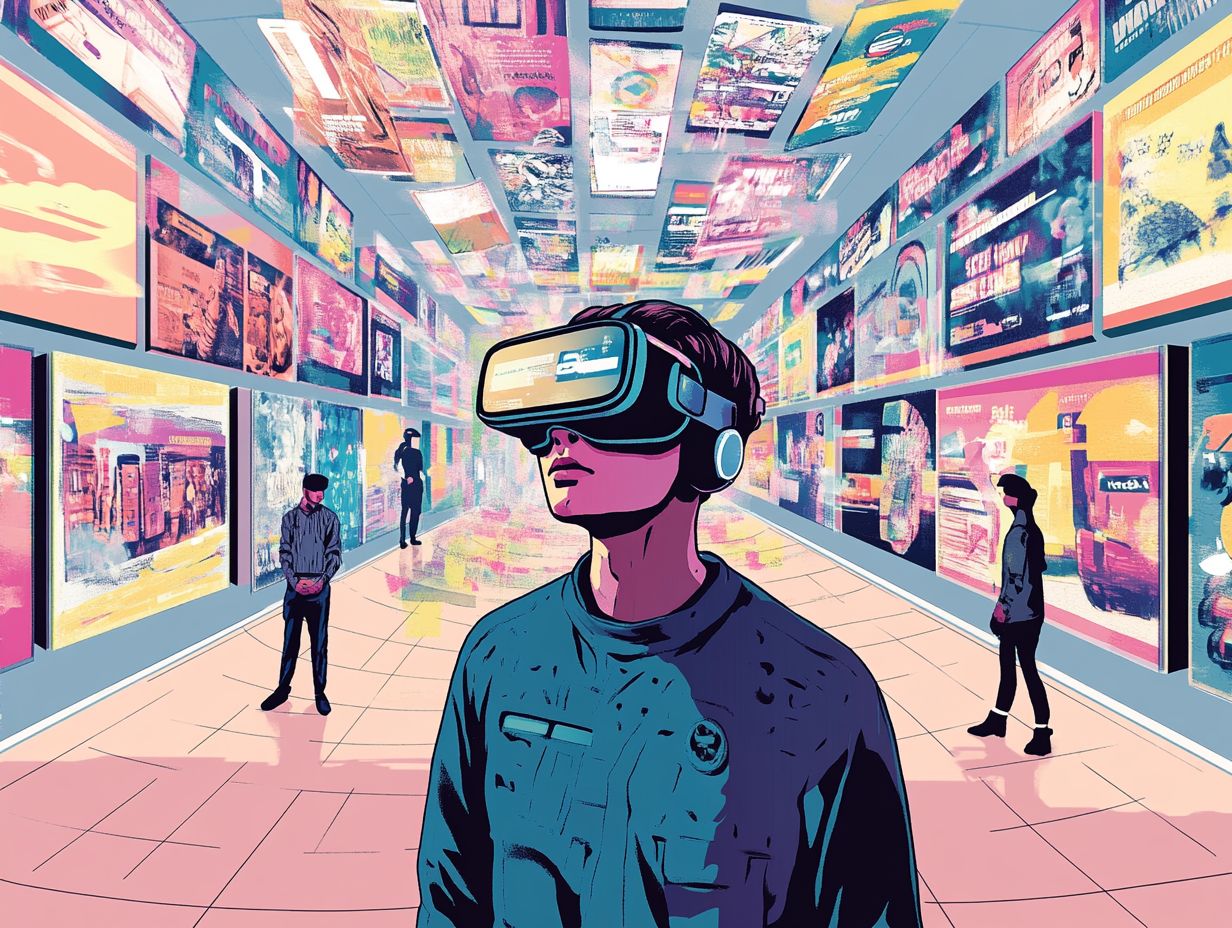
Increased brand awareness is a significant advantage you can gain by utilizing Virtual Reality (VR), a technology that creates a simulated environment, in your marketing strategy.
With VR, you have the power to craft engaging brand stories that truly resonate with your audience. By leveraging engaging storytelling methods, you can create unique marketing opportunities that stand out in a crowded marketplace.
This innovative approach has been brilliantly demonstrated by brands like IKEA and Nissan, which have embraced VR to engage consumers in exciting new ways.
For instance, IKEA’s VR kitchen experience allows potential customers to visualize and interact with their products in a virtual setting. This significantly boosts their interest and engagement.
Similarly, Nissan developed a 360-degree virtual test drive that reached millions on platforms like Facebook and Instagram. This showcased their latest models and generated considerable buzz.
The immersive nature of VR captivates viewers and encourages them to share their experiences on social media. This amplifies brand visibility exponentially and paves the way for future campaigns.
Improved Data Collection and Analytics
Want to know your customers better? Virtual Reality (VR) can help! Improved data collection and analytics stand out as essential advantages when you incorporate VR into your marketing strategy.
By engaging users in immersive interactions, you gain exciting insights into their needs and preferences, allowing you to craft more effective marketing campaigns.
With VR s capability to track user behavior in real-time, you can gather nuanced data about how users interact with your products or services.
Take IKEA, for example; they enable customers to visualize furniture in a simulated home setting. This provides a unique look at how users make decisions based on layout and design.
By analyzing this data, you can refine your product offerings and tailor your marketing strategies.
Coca-Cola also leverages VR experiences to gauge emotional responses to their advertising content, collecting real-time data that informs future campaigns.
This compelling blend of experiential engagement and data analytics paves the way for more targeted approaches that truly resonate with consumers.
Examples of Successful VR Marketing and Advertising Campaigns
You ll find that numerous brands have adeptly leveraged VR marketing to craft engaging advertising campaigns that truly resonate with consumers.
This innovative technology has proven its effectiveness not just in product development but also in brand storytelling.
These compelling case studies showcase how VR can captivate audiences and elevate brand perception across a multitude of industries.
Case Studies and Results
Analyzing case studies of VR applications in marketing reveals the profound impact that immersive media can have on brand engagement and consumer interaction.
These real-world examples highlight various marketing campaigns that effectively leveraged VR to achieve measurable results.
One standout campaign featured a leading automotive company that harnessed VR to offer potential customers an immersive test drive experience.
By incorporating 360-degree video and interactive elements, the company enabled users to explore the features and designs of their latest model all from the comfort of their homes.
The success of this initiative is underscored by key performance indicators, including a remarkable 25% increase in dealership visits and a significant rise in customer satisfaction ratings.
Another campaign showcased a retail brand that crafted a virtual store environment, leading to a 40% boost in online engagement and a notable improvement in conversion rates.
This illustrates the versatility and effectiveness of VR in captivating consumers and enhancing their shopping experience.
How to Incorporate VR into Marketing and Advertising Strategies
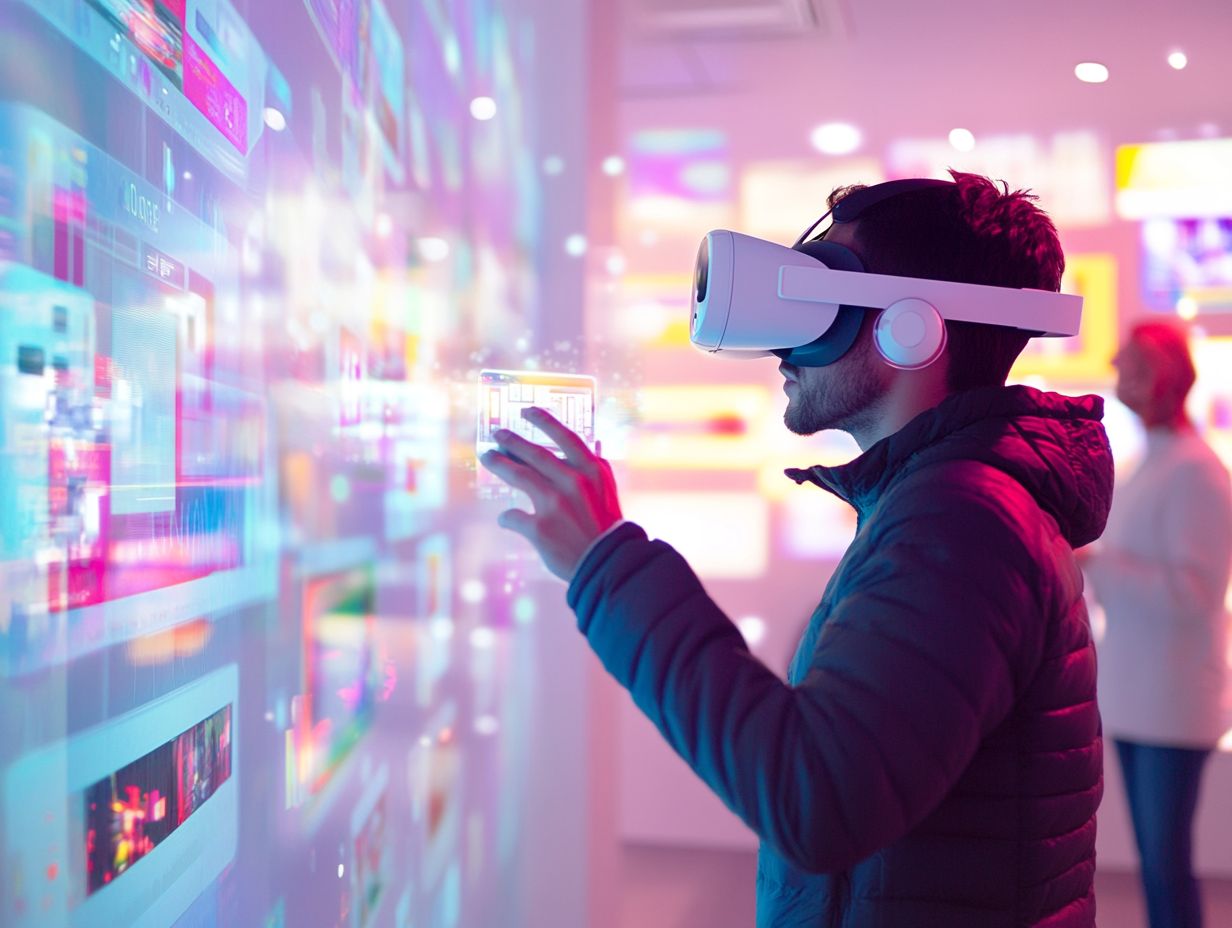
Act now to incorporate Virtual Reality (VR) into your marketing strategy and transform your audience engagement!
This demands a careful and strategic approach.
This includes exploring innovative methods like interactive ads, virtual try-on experiences, and targeted marketing initiatives.
By grasping the fundamental principles of VR marketing, you can effectively leverage this cutting-edge technology to elevate your overall marketing strategy and engage your audience in new and exciting ways.
Practical Tips and Considerations
When considering VR marketing, it s essential to weigh practical tips and insights. These can elevate your marketing opportunities while catering to consumer needs. Striking a balance between cutting-edge technology and valuable data resources ensures your campaigns resonate and engage effectively.
Explore different VR platforms to discover the one that best aligns with your brand message and target audience. Collaborating with AI-powered influencers can create unique, personalized experiences that captivate consumers, fostering a more immersive interaction.
Understanding consumer expectations is equally crucial. Before launching a campaign, collect audience feedback to gain valuable insights. Continuous market research is just as important; staying informed about emerging trends and shifting consumer behaviors allows you to adapt and innovate as the landscape evolves.
Future of VR in Marketing and Advertising
The future of Virtual Reality (VR) in marketing and advertising presents extraordinary possibilities. Experts predict a significant shift towards more immersive storytelling and enhanced emotional experiences for consumers.
As technology continues to evolve, brands will discover innovative methods to captivate audiences. They will seamlessly integrate VR into their marketing strategies for a truly transformative impact.
Predictions and Potential Impact
Predictions about VR applications in marketing indicate a remarkable transformation. Brands will craft immersive environments that align with evolving customer expectations. As you delve into market research, the potential impact of VR on marketing will expand significantly.
This evolution compels companies to rethink traditional advertising methods. They must merge creativity with technology to deliver personalized experiences that resonate with consumers. Customers are increasingly accustomed to engaging with brands in these virtual realms, prompting their expectations to tilt toward more innovative and interactive interactions.
To remain at the forefront, brands must explore unique VR applications from virtual try-ons and product demos to fully immersive storytelling. By using these advanced technologies, they can capture attention and cultivate deeper emotional connections with their audience, ultimately redefining the customer journey and enhancing brand loyalty.
Preguntas Frecuentes
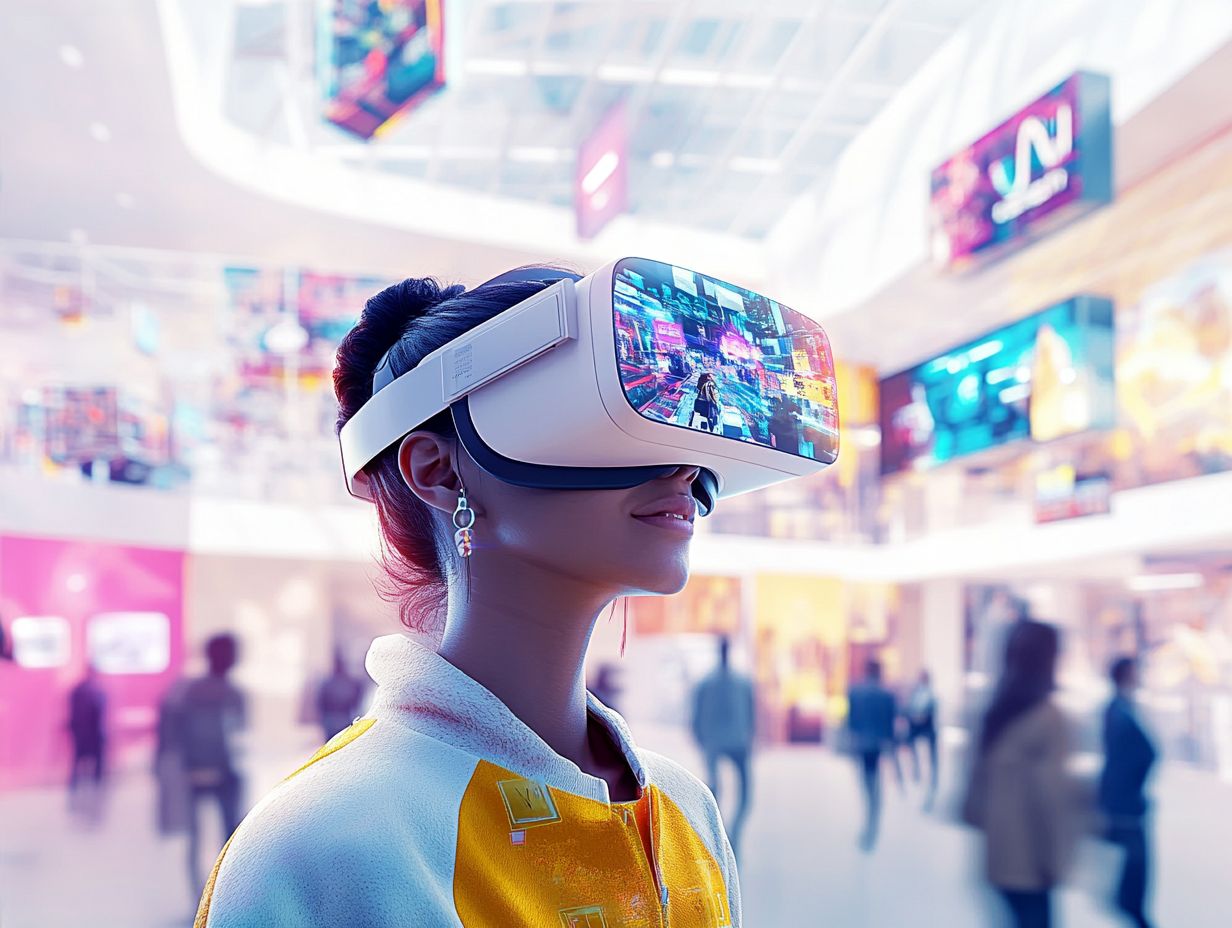
1. C mo se utiliza la realidad virtual (RV) en marketing y publicidad?
La realidad virtual transforma el marketing, creando experiencias inolvidables para los clientes. Las marcas pueden usar la RV para mostrar sus productos y servicios de manera din mica e interactiva, permitiendo a los consumidores interactuar plenamente con la marca y formar una conexi n m s fuerte.
2. Cu les son algunos ejemplos de RV utilizada en marketing y publicidad?
Algunos ejemplos incluyen demostraciones de productos virtuales, recorridos virtuales de propiedades o ubicaciones, y juegos o experiencias de RV de marca. Las marcas tambi n han utilizado la RV para activaciones de eventos, como la creaci n de stands o exhibiciones virtuales en ferias comerciales.
3. C mo beneficia a las marcas el uso de la RV en marketing y publicidad?
El uso de la RV puede beneficiar a las marcas de varias maneras. Ayuda a crear una experiencia memorable y nica para los consumidores, aumenta la conciencia y el compromiso con la marca, y diferencia una marca de sus competidores. Tambi n proporciona datos e informaci n valiosa sobre el comportamiento y las preferencias del consumidor.
4. Qu tipos de negocios o industrias pueden beneficiarse del uso de la RV en marketing y publicidad?
La RV es beneficiosa para negocios que ofrecen productos o servicios visuales o experienciales, como bienes ra ces, viajes y turismo, automotriz y minorista. Sin embargo, con la tecnolog a en avance, la RV tambi n puede ser utilizada por una amplia gama de negocios para crear campa as de marketing innovadoras y atractivas.
5. C mo se puede integrar la realidad virtual en la estrategia general de marketing y publicidad de una marca?
La realidad virtual se puede integrar en la estrategia de marketing de varias maneras. Puede ser parte de una campa a m s grande o una t ctica independiente.
Las marcas pueden crear experiencias de realidad virtual que sean compartibles en redes sociales. Tambi n se puede utilizar como una herramienta efectiva para el marketing de influencers.
Es fundamental considerar el p blico objetivo y los objetivos de la marca al decidir c mo integrar la realidad virtual.
6. Es la realidad virtual accesible para todos los consumidores y c mo pueden las marcas asegurar la inclusividad al utilizarla en marketing?
Aunque la tecnolog a de la realidad virtual es m s com n, no es accesible para todos. Las marcas deben ofrecer opciones alternativas para aquellos que no pueden usarla.
Esto puede incluir versiones no virtuales de experiencias o mecanismos para que personas con discapacidades participen. Asegurar que las experiencias sean inclusivas es vital para atraer a todos los consumidores potenciales.


